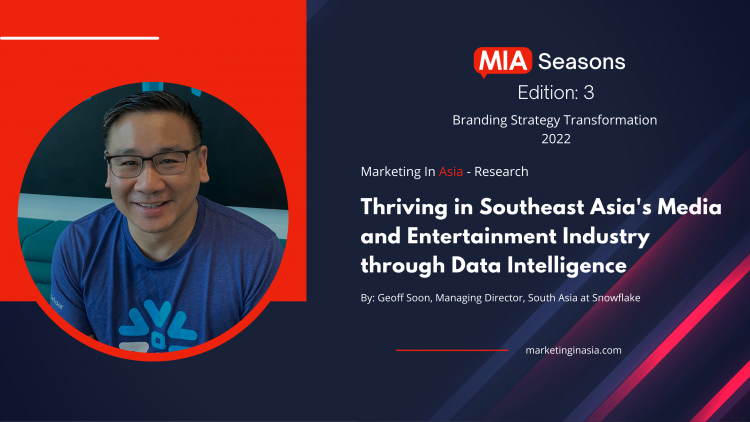Not too long ago, media and entertainment companies relied on audience surveys, ratings, and blockbuster charts to arrive at business and investment decisions. Insights to viewers’ wants and preferences were limited, and many projects were often hit-or-miss affairs. As digitalisation continues to transform many industries, including the media and entertainment sector, the scenario is changing rapidly.
Across Southeast Asia, consumers are moving towards new media consumption models as streaming platforms continue to gain traction. Recent research shows online video views for Q3 2021 have reached 1.25 trillion minutes across measured platforms including advertising-based video on demand (AVOD), subscription video on demand (SVOD), freemium and game streaming. Moreover, premium video streaming further increased, capturing 10 percent of total video consumption driven by leading content providers Netflix, Vie, WeTV, iQIYI and Disney+.
With the availability of data from a host of content delivery platforms including mobile devices, computers and HD boxes, the entertainment industry is positioned with tools to be predictive, and more accurate in making decisions to provide their viewers with movies and TV shows best suited to them. This personalised tool also allows a prediction on the popularity of the content before it is released.
Artificial intelligence and machine learning presents vast opportunities for media and entertainment firms to understand what content, shows, movies and music consumers want. This is possible due to the amount of data the media and entertainment industry generate – from viewership records to social media sentiments, demographics to device data – combined with the accelerated adoption of digital technologies such as cloud.
To harness the opportunities with the growth in content consumption, build up a comprehensive 360° view of their customers and open new revenue streams, industry players must solve their data challenges and empower their organisations to become truly data driven.
Unlocking the Power of Data
With the upcoming mass 5G rollout in countries such as Singapore and Malaysia, we can expect more entertainment and gaming innovations such as virtual and augmented reality will be introduced to the market. As such, the demand for hyper-personalised content and immersive entertainment will continue to increase.
With the explosion of data, particularly in the Over-the-top (OTT) and streaming services space, new approaches to advertising, customer acquisition and product development are emerging. This has opened tremendous opportunities for companies within the media and entertainment sector in Southeast Asia to move seamlessly across platforms and stay competitive in a fast-evolving digital world. However, gaining insights into audience preferences while complying with consumer privacy regulations is just one of the hurdles companies must overcome to provide engaging and customised experiences.
Here are some of the areas illustrating the importance of data in the media and entertainment vertical:
- New Product Development and Predictions on Audience Interests: Viewing history, searches, reviews, ratings, location and device data, clickstreams, log files and social media sentiment are just a few data sources that help organisations identify audience interest.
- Content Monetisation: Data can also help media and entertainment companies generate additional sources of revenues, suggesting new ways to incentivise consumer behaviour, and identifying a new product or service opportunity.
- Effective Advertisement Targeting Through Micro Segmentation of Customers: Since consumers access media and entertainment on multiple devices at the same time, big data insights can help better understand when consumers use a different device to consume the same content. Campaigns can be optimised across devices resulting in more apt and segmented advertising initiatives.
With the multitude of ways consumers access content, data proliferation and segmentation has become a challenge within the industry. To deliver personalised content and experience, companies should first create a single source of truth by storing, integrating, and querying all their data in a single location. By breaking data silos and leveraging data at scale, companies can aggregate data from various sources, gain market insights and create a holistic view of their customers.
With data on consumers’ consumption patterns and habits, companies can enhance content development and acquisition and make better decisions on which projects to fund or which channels to launch their content. Media organisations can also tap on the capabilities to share and match first-party data in a secure, privacy-compliant manner, generate richer audience insights, and run targeted
campaigns that drive real, demonstrable business value. By tapping on data from publishers and technology companies, organisations can analyse every click, hover, or stream across devices to create a comprehensive view of subscribers, understand drivers of subscriber acquisition and retention, and increase average revenue per user (ARPU) without data ever leaving their environment.
For example, Snowflake has partnered with Disney Advertising Sales, which is responsible for integrated marketing for The Walt Disney Company’s entertainment and sports offerings through linear, digital, social, audio and ad-supported streaming businesses. The collaboration with Snowflake has enabled Disney Advertising Sales to gain access to customers’ data for the purpose of customisation of offerings in a secured data environment. This enables the marketing team to optimise their efforts and target customers in a more efficient manner, saving time and costs.
The future of media and entertainment is data-driven
With the help of platforms and data analytics technologies, companies can scale their use of data while complying with consumer privacy regulations and reducing their costs.
Through data-driven decision-making, companies within the media and entertainment sector can deliver personalised content and experiences, retain customers, grow their business, and build a data-driven future.

















